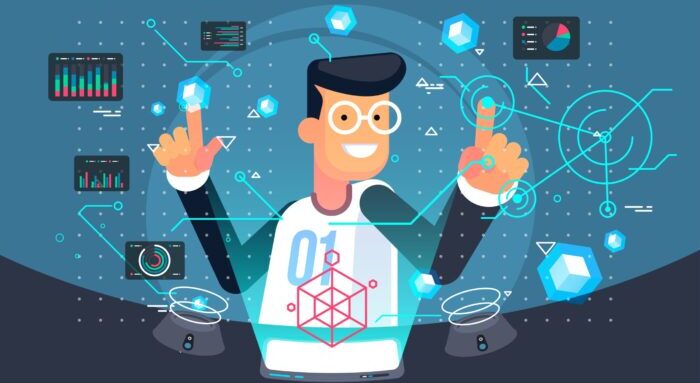Learning is a constant part of our lives, it starts when we are born, and it ends when our life does.
However, there are points in our lives where our knowledge is tested, and we need to show our professors, mentors, and even our bosses that we are able to retain and use new information.
If you have ever felt that you are not good enough at remembering, you should know that you just haven’t found the right technique. Here, we are going to help you turn your slow way of understanding new information into pro ways of learning.
Keep on reading to learn how to master the art of fast learning and improved remembering.
How to Use Memory Palaces to Increase Your Ability to Remember?

A stroll back in time takes us to the Roman and Greek civilizations where the concept of the Memory Palace, or the “Method of Loci“, was a mainstay.
Instead of relying on mere textual recall, it immersed learners into an imaginative journey through constructed spaces or ‘palaces’. In these spaces, each corner or room held a piece of information.
So, when one mentally navigated through this palace, every piece of data attached to the imagined space would naturally follow, facilitating recall.
Another way that you can achieve this is by not focusing on the big picture, but instead going for the details. Chunking is the elegant art of simplification.
By diving extensive and often overwhelming information into manageable “chunks” or groups, learners can process and remember them with greater ease. It’s akin to enjoying a meal piece by piece rather than attempting to devour it all at once.
Know How to Utilize the Power of Artificial Intelligence

In the realm of technology, AI stands out as a stalwart ally for learners. Capitalizing on the psychological ‘spacing effect’, modern AI-aided platforms like Gizmo have incorporated a strategy known as spaced repetition.
Here, the emphasis is not on repetitive and monotonous rote learning. Instead, the AI gently nudges the learner to revisit the information at strategic intervals.
This ensures a smoother transition of knowledge from the ephemeral boundaries of short-term memory into the lasting vaults of long-term memory.
How to Use Digital Simulations to Stimulate Your Brain?

While traditional reading and auditory methods of learning have their merit, there’s something innately engaging about interactivity. Enter digital simulations and augmented reality. Imagine grappling with the intricacies of a human cell.
A digital simulation can bring this cell to life, allowing learners to dissect its components and understand their functions in real-time, solidifying the learning experience.
The age-old practice of using visual aids has seen a tech-savvy enhancement with digital mind-mapping tools. They don’t just display information; they create an intricate web showing how one piece of data interlinks with another.
But once this learning has occurred, how does one gauge its depth? That’s where AI analytics steps in. It’s not just about pinpointing errors. It’s about understanding the ‘why’ behind them and offering actionable insights.
How to Stay Mindful and Keep up With the Ever-Evolving Learning Landscape?

In our quest for rapid learning, the environment and our mental state play pivotal roles. Ensuring a serene, well-lit space devoid of distractions paves the way for focused learning.
Complementing this with mindfulness exercises, like meditation or even a brisk walk outdoors, rejuvenates the mind, optimizing it for the next learning session.
The world of fast learning is neither about haste nor about superficial skimming. It’s a carefully choreographed dance of absorbing, understanding, and recalling.
By seamlessly integrating age-old techniques with the groundbreaking advances of technology, particularly AI, we’re setting ourselves up for a future where continuous, efficient learning becomes second nature.
Know When It Is Time to Push Yourself and When to Take a Rest

Every individual has certain times of the day when their brain is at its most alert. Capitalizing on these “peak times” can make a significant difference in learning and retention.
For some, the early morning hours, just after waking up, serve as the best time for absorbing complex materials. For others, the tranquility of late evenings provides the perfect backdrop for deep study sessions.
Recognizing and harnessing these prime hours can lead to more productive learning sessions with heightened retention rates.
An incessant drive to learn is commendable, but even the most enthusiastic learners need breaks. This isn’t just about physical rest, but mental rejuvenation. The Pomodoro Technique, a time-management method developed by Francesco Cirillo in the late 1980s, advocates for 25-minute study sessions followed by a 5-minute break.
These short, consistent bursts of learning, punctuated by brief intervals of relaxation, can boost cognitive performance and reduce the onset of fatigue.
How to Trick Your Brain Into Remembering by Using Stories

Human brains are wired for stories. They’re not just for entertainment; they serve as powerful tools for embedding information into our memory. By framing data or complex concepts within a narrative structure, learners can anchor information more effectively.
It could be as simple as crafting a story around historical events or creating a hypothetical scenario to understand a mathematical problem. The emotive power of stories, coupled with their structured format, provides an excellent avenue for enhanced retention.
Don’t Forget That Your Peers Can Help You Learn and Remember
While self-study has its merits, engaging with peers brings a new dimension to the learning process. Group studies or discussions foster a collaborative environment, wherein individuals can bounce ideas off each other, clarify doubts, and gain multiple perspectives on the same topic.
This not only cements one’s understanding but also aids in filling knowledge gaps. Furthermore, teaching or explaining concepts to others is a powerful reinforcement method, ensuring that the explainer solidifies their grasp on the subject.
Embarking on the journey from being a slow learner to a masterful pro isn’t just about adopting techniques; it’s about cultivating a mindset. A mindset of curiosity, persistence, and adaptability.
As the world continues to evolve, so do the methods and tools available for learning. Whether one leans towards traditional methods or embraces the latest technological advancements, the essence remains the same: a dedicated pursuit of knowledge.
Embracing this path with an open heart and a keen mind ensures that the journey to mastery is as rewarding as the destination itself.
If you are constantly battling with procrastination, worry not because our guide will help you stop procrastinating and start studying in no time!











